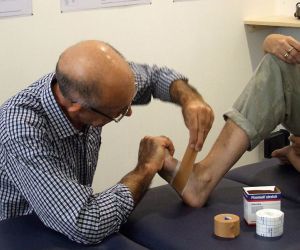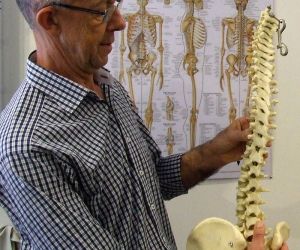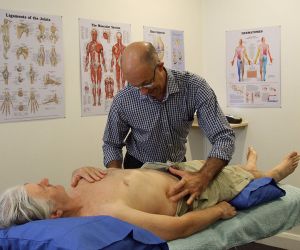Neck stiffness and pain can be improved with muscle and joint release, postural strategies and home exercises. Headache can arise from a number of causes. One common cause is muscular tension coming from neck muscles and/or spinal joint dysfunction in the upper neck. Muscle release and spinal joint mobilization assist you to achieve better spinal mechanics and reduce headache. Correct sitting and computer workstation set-up is also important when treating neck pain and headache.
Quite often one side of the pelvis is higher than the other, which also produces apparent uneven leg length. This asymmetry is usually due to weakness in some muscles of the pelvis and overactivity in others. The overactive muscles can cause pain. The asymmetry can cause back pain. Having a level pelvis is important if the spine is to be comfortable. Pelvic symmetry can also be important in reducing hip and knee pain.
Back pain usually arises due to an injury or chronic strain of a disc, ligament or tendon/muscle. If you are stiff in the lower back, muscle release and joint mobilization often improves movement and relieves pain. You will also benefit from home exercises so as you can continue the benefits of treatment at home.
Acute lower back pain, including pain arising from disc injury, often responds well to correct positioning and home exercises.
Chronic lower back pain is often associated with loss of strength and coordination of abdominal, lower back and muscles of the pelvis. Core strengthening exercises, including strengthening for any secondary weakness that has developed in the pelvic region are taught to stabilize and protect spinal structures.
Learning correct sitting postures and lifting/work methods that protect the lower back from further injury are critical to successful long term recovery from injury, pain and disability. Peter will teach you how to position your pelvis so as to achieve a neutral lumbar spinal curve. This lumbar posture will help unload your spine and allow it to heal and recover. Leaning these skills will help you to avoid future injury and degeneration of the spine.
Conditions treated
- Core stability
- Hips, knees, ankles and feet
- Lower back pain
- Management of acute injuries
- Neck pain and Headache
- Neurological pain in arms and legs
- Overuse injuries
- Pelvic Asymmetry
- Physical Rehabilitation
- Problems associated with cycling
- Problems associated with yoga
- Shoulder, elbow, wrist, hand, and fingers
- Sports injuries
- Vehicle seating - adjustment and adding support
- Work injuries



